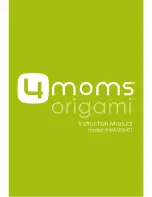
Technical Reference
WATLOW Series 1500 User's Manual
45
Programming, Chapter 4
WT (Wait) Step Programming
This submode allows the Series 1500 to wait for Channel 1 and/or Channel 2 actual
process inputs and/or the real time of day. You can wait for one or two of these
conditions, or all of them. If you don't need one wait condition, just press the FCTN
key, and the next Wait prompt will appear.
•
With W1 (Channel 1 Actual) select the Ch-1 Wait set point and press ENTER.
•
With W2 (Channel 2 Actual) select the Ch-2 Wait set point and press ENTER.
•
With WE (Wait for Event) Enter a "1" to wait for a closed switch condition or a "0"
to wait for an open switch condition at the Event Input.
•
With WH, WM, WS (Real Time of Day) select each component of the real time of
day set point and press ENTER.
A Wait Step maintains the same Set Points and Event Output conditions that existed
at the end of the previous step.
If Step #1 is a Wait Step and the program is halted on Step #3 a set point step. If
"RE-START" is pressed and you run again, the 1500 will wait for the Step #1 condi-
tions maintaining the set points from Step #3. Since this is not always desirable, you
could place a short (1 second) step immediately before the Wait Step to establish
new set point values.
Enter "0" by pressing the ENTER key when the Data Display is blank, or when a "0"
is in the display.
When waiting for Time, program all three units (HR-MN-SC). If you program only
"53" for Minutes, but enter nothing for Hours or Seconds, the programmed time will
be 53 minutes after midnight, 00 53 00.
The Wait Step does not follow the linear ramping path to reach the new conditions,
as a Set Point Step does. A Wait Step uses the previous step's set point. To opti-
mize control (reduce the overshoot and undershoot), a Wait Step uses the "PID
Parameters" to satisfy the wait condition. In other words, select the step type which
best matches your needs.
NX (Next Step) Programming
After the final prompt in each of the step types (SP, JL, or WT), pressing ENTER
advances the processor to NX, which selects the next program step. At the same
time the STEP display will advance by one.
Pressing ENTER again will bring up SP, JL or WT if the next step has no pro-
grammed information. Or, if there is data in the subsequent step, the processor will
move to the first prompt in that submode. For example, if the step is an SP step, S1
will come up; if a WT step, W1 appears in the FUNCTION display, and so on.
If you want a different step from NX, select the number of the step you want in the
DATA display with the UP and DOWN keys, then press ENTER. Again, the proces-
sor will move to one of the three step types if the step is blank, or to the first prompt
in the the step type loop: S1, JS or W1.
Pressing FCTN at NX instead of ENTER will send the processor back to the initial
prompt in the current step.
Y
l
d
hil
h
i
i
Th
















































